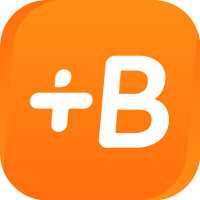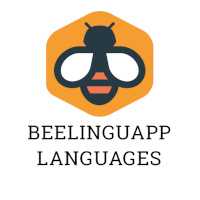What Is The Best Spanish Learning App
When choosing an app to learn Spanish, we feel like we're shopping for something that should be simple but overwhelms us to no end.
All apps claim to be "fun", "the best", "the fastest", "the most engaging". They all claim to be using the latest technology.
Unfortunately, just like online Spanish courses, many apps invest way too much on marketing and way too little in their product - and it shows.
So how can you choose an app to learn Spanish once and for all?
Some good news: you don't necessarily have to choose just one. Many of them offer great value for free and fulfill different purposes, so you can select and combine.
You'll also see from this list that many won't fit your language learning approach in the first place, and some products will speak more to you than others.
Having said that, let's look at several apps for learning Spanish and how they can serve you. Keep in mind that depending on your preferences, habits, approach and even design taste, you'll want to be selective.
Let's dive in!
DISCLAIMER: The comments below are personal opinions.
Best apps to learn Spanish if…you love order and structure.
Mondly

Mondly was launched in 2014 and has become quite popular since then. It's modern and unafraid to experiment with technology, using augmented reality, virtual reality and chatbots to help people learn languages. This could be your platform if you enjoy playing around with different features or clicking around to discover more information. If you've enjoyed using Duolingo and Babbel in the past, Mondly could be your next bet, as it feels like a combination of these two with some extra visuals.
Platforms: Web, Android and iOS.
Variety: European Spanish.
What you'll like about it:
- Options to learn Spanish with the support of languages other than English.
- You receive unique new lessons every day, rather than paying for content that'll remain the same.
- One of my personal favorites was the ability to click any verb you see in context to open a small window with all conjugations of that verb (past, present and future), pronunciation included.
- Mondly actually creates daily lessons based on your previous learning, so some lessons will be adapted to you as an individual.
- The app has received great reviews for their chatbot and speech recognition features.
- Perfect if you like having the support of your native language to learn a new language.
- Wide range of topics covered for beginner courses, which is useful if you like learning vocabulary by category (travel, family, body parts, colors, etc).
What you might not like:
- You don't get much for free - if you're going to use Mondly, you'll have to commit to a paid version.
- Sometimes the app can come across as a fancier version of Babbel or Duolingo, with similar translation exercises, match exercises (words-images or words-translation), which can get a little tiring.
- If you prefer a minimalist design or feel easily overwhelmed by platforms with a lot going on visually, you won't like Mondly.
- You'll have to pay more if you want access to more languages apart from Spanish.
- The intermediate and advanced levels aren't that challenging. In fact, they seem almost similar to the beginner level, except for the fact you get exercises instead of lessons.
- Not the best if you dislike relying on translation to learn a new language.
- Dialogues can feel stiff and artificial.
Pricing: 9.99€ monthly or 47.99€ yearly.
See this Mondly review.
Rocket Spanish

Rocket Languages is one of those apps that used to be quite criticized, but proved they listen to feedback and actually change their product to keep up with the times. The platform offers comprehensive courses that help you practice all skills (speaking, listening, reading and writing) with some grammar demonstrations (rather than explanations). It uses the concept of chunking to teach you Latin American Spanish, which means you'll learn phrases instead of isolated words.
Platforms: Web, Android and iOS.
Variety: Latin American Spanish.
What you'll like about it:
- Dashboard is clean, intuitive and user-friendly.
- Content is divided between interactive audio lessons, language and culture lessons, writing lessons and survival kit lessons.
- Rocket Record is a voice recognition tool that helps you perfect your pronunciation.
- If you like learning a new language using explanations and context in English, Rocket Languages is great for you. The host of the course acts almost like a teacher, guiding you through dialogues and asking you to repeat certain phrases.
- Audio quality and dialogues are excellent, including expressions used in everyday life.
- The culture lessons are invaluable, giving you details about how people interact and what is expected of a Spanish speaker in certain contexts.
- Includes a "My Vocab" tool in which you can search for specific phrases you've learned in the past and see them immediately in context with pronunciation.
What you might not like:
- Requires an immediate financial commitment and is quite pricey compared to other apps, especially considering you pay for lifetime access rather than monthly access.
- If you prefer immersion to constantly getting explanations and guidance in English, you'll be better off with another option.
Pricing: $99.95 for the first level, which takes you from beginner to low intermediate (lifetime access). $249.90 for levels one and two together, which take you from beginner to intermediate/low advanced. Finally, you can purchase levels one, two and three, which take you from beginner to solid advanced, for a cost of $259.90. If you purchase the course and decide it's not for you, you have 60 days to ask for your money back without questions.
UNIQUE OFFER:
Join The Guild by clicking here, select Spanish and I'll send you a unique offer for Rocket Spanish exclusive to my readers only.
See this Rocket Spanish review.
Glossika

Glossika was founded in 2016 and revolves around the concept of spaced repetition, which has become practically a requirement in new language learning apps. The app customizes content to your level and uses audio-based lessons to create an immersive environment and help you speak Spanish from the get-go. The platform also uses dictation, multiple choice and fill-in-the-gaps for you to practice.
Platforms: Web.
Variety: European Spanish and Mexican Spanish.
What you'll like about it:
- Take a placement test to see where you should start.
- Set a daily goal for yourself, so you adjust your expectations and measure your progress.
- The course introduces only about 5 phrases per lesson, so you never get overwhelmed and focus on perfecting your skills little by little.
- You can skip sentences that are too easy for you (or that you already know).
- You can favorite certain phrases you predict you'll be using often.
- You start learning useful phrases right from the start, even if they wouldn't be traditionally taught in a Spanish course right from the start. For instance, in your first lesson you might learn how to say "Today is Wednesday".
- Subscription includes access to all language courses, not just Spanish. This can be an advantage if you want to learn multiple languages.
- No grammar explanations, which is great if you prefer immersive courses.
What you might not like:
- If you prefer a more traditional way of learning Spanish or are an absolute beginner, Glossika might overwhelm you. You start learning entire phrases right from the beginning, sometimes learning to say "It's clean now" or "You're lazy" before learning how to say "What's your name?".
- Some reviews claim the content can get a little boring after some time.
- Subscription includes more languages than just Spanish, which might be a disadvantage if you aren't interested in learning other languages.
- No grammar explanations, which can be a disadvantage if you prefer having some support in that area.
- Content is the same across different languages, which can be a turn-off.
Pricing: 7-day free trial before you purchase the product. After that, you can pay $30 a month or $299.88 yearly for access to all languages offered by Glossika.
See this Glossika review.
Lingodeer

Lingodeer is a grammar-based platform. From this list of apps for learning Spanish, it might be the one that most closely resembles a traditional course, because it relies on grammar explanations alongside vocabulary study to help you understand the complexities of Spanish from the get-go. Apart from that, Lingodeer offers some side tools to help you learn Spanish, such as quizzes and tests, cultural stories and flashcards.
Platforms: Web, Android and iOS.
Variety: European and Latin American Spanish.
What you'll like about it:
- Simple design, perfect if you like a clean platform that doesn't feel visually crowded.
- Great option if you're a grammar lover and enjoy understanding the structure of a language as you go, rather than just being exposed to the language.
- Lingodeer might be better for you if you're an absolute beginner who likes having a structured, objective explanation of how things work before you dive in, pretty much like you would in a traditional school.
- Linear curriculum with suggested categories, which can be an advantage if you like having order and structure in your learning.
What you might not like:
- At least for beginner lessons, some vocabulary is introduced in isolation (not in the context of a dialogue or sentence).
- If you like learning through immersion and not having to deal with grammar explanations, Lingodeer is not for you. The very foundation of the app relies on the importance of grammar to understand a language.
- Might be a little too easy for intermediate and advanced learners.
Pricing: $11.99 per month, $29.99 per quarter, $79.99 per year or $99.99 for lifetime access to Lingodeer.
See this Lingodeer review.
Babbel

Babbel has completely taken over the language learning market with its attractive design, dialogue-based learning and bite-sized lessons (15 minutes) that you can easily complete every day. The fact that you're immediately exposed to dialogues is exciting and helps you understand how the language works from the get-go. There are also occasional grammar and cultural notes that glue it all together and plenty of interesting courses that act as a complement. For example, apart from the typical courses that take you through levels, you can find mini-courses like Business Spanish, Mexican Spanish, Listening and Speaking, Countries and Traditions, and more.
Platforms: Web, Android and iOS.
Variety: Unspecified, but there are several courses that focus on Mexican Spanish.
What you'll like about it:
- Although Babbel offers different languages to learn, the content is unique for each language. That means you'll find original content that relates to cultures of Spanish-speaking countries and is actually relevant to the language at hand, rather than finding copy-pasted material.
- Babbel asks you plenty of questions as soon as you start your account, so they can curate content that speaks to your interests and level.
- Easy to study on-the-go.
- Quite affordable considering the quality of the product.
- Each lesson uses dialogues that put expressions and words in context (all with audio read by native speakers). The conversations don't feel forced or robotic. You're also invited to start completing the gaps in these dialogues as soon as you get started, which is a great way to start applying your knowledge immediately.
- Interface is clean, well-designed and user-friendly.
What you might not like:
- Some might claim Babbel is basically a glorified Duolingo or Rosetta Stone with stronger marketing, as its activities end up not being too diverse (flashcards, fill-in-the-blanks, multiple choice, listen and repeat).
- After completing a few levels, the lessons start getting a little repetitive and boring.
- There isn't a trial period: you get to try only one lesson for free, which isn't always the best way to figure out if an app works for you or not.
Pricing:
- 12.99€ for one month of access, 29.97€ for three months of access, 47.94€ for 6 months of access and 71.88€ for a year of access.
See this Babbel review.
Pimsleur

Pimsleur is based on an audio-based system which promises to eliminate noise and distractions to teach you Spanish. Using the principle of anticipation, graduated interval recall, context and limited amounts of information at a time, Pimsleur teaches you Spanish with the guidance of a tutor in English, so you'll get something similar to a traditional classroom experience with native speakers to provide examples.
Platforms: Web, Android and iOS.
Variety: European Spanish and Latin American Spanish.
What you'll like about it:
- Before starting your free test, you're introduced to Dr. Pimleur's principles of memory and language learning, which can help you create a habit and become more consistent. For example, you're invited to complete only one audio lesson per day, not more, which sounds quite doable.
- Some new words are broken down into parts, so you can perfect your pronunciation syllable by syllable and sound natural from the beginning.
- If you enjoy the guidance and explanations in English from a teacher who can lead you little by little, you'll enjoy Pimsleur's courses. You're taken step by step through a dialogue and asked to repeat expressions. Shortly after that, you're unexpectedly asked to recall expressions, which is a smart strategy.
- Something I have personally enjoyed is that intonation is also taught. This is especially important in a language like Spanish, in which asking most questions and making a statement differ in nothing except intonation. (Tienes dinero. - Tienes dinero?)
- Vocabulary review options include reading, using flashcards, a quiz, a "Speak Easy" option (to practice rhythm, intonation and pronunciation) and my personal favorite: a speed round in which you match expressions as quickly as you can, forcing you to recall under pressure.
What you might not like:
- Pimsleur only allows you to test one free lesson, which is not enough, especially if you're not an absolute beginner.
- If you're bothered by the guidance or explanations of a teacher in English separating you from full immersion, this is not the product for you.
- Because the course requires speaking out loud and repeating words as you hear them, it is not the best option if you're learning Spanish in public places or during small breaks, like returning home from work.
- You'll have to make quite the investment if you want to purchase the entire course (all levels) straight away.
- Recent reviews claim the app is not working well technically, with frequent crashes and difficulty downloading lessons.
Pricing: $575.00 for a full course (levels 1-5). You can also choose to purchase 30 lessons at a time (one level) for $150.00 each. If, instead, you prefer a subscription type of payment, this is also available. The Pimsleur Premium App subscription costs $19.99 a month.
See this Pimsleur review.
Busuu

Busuu promises to teach you Spanish in 10 minutes a day. With a variety of courses, exercises and topics to choose from, it is fit for all levels. It also includes an interesting social component to its method, allowing you to connect with native Spanish speakers and other users. This fosters a sense of community and collaboration by allowing you to correct other people's exercises and get corrections. It's quite an ambitious proposal, but Busuu seems to include a lot of what other apps on this list do in a single platform: general courses, specialized courses, a social tool and vocabulary/grammar practice.
Platforms: Web, Android and iOS.
Variety: European Spanish.
What you'll like about it:
- You don't have to settle for a typical Spanish course. Apart from the regular course, there are other options called Spanish for Travel, Learn Spanish with El Pais (news articles and videos), and a podcast called All About Spanish.
- If you're willing to pay a little extra, you can book a 30-minute one-to-one live lesson with a professional tutor to practice speaking.
- Fit for beginners, intermediate learners and advanced learners. Some listening comprehension content and testing is actually challenging.
- You can get a personalized study plan depending on your goals and availability. However, this feature is paid.
- You're not forced to complete beginner levels to access more advanced content.
- The questions you got wrong are repeated later on, so you get a second chance to practice.
- The platform includes a social tool in which you can get in touch with native Spanish speakers and other learners, very much like you would with HiNative.
- Affordable when compared with other apps in the market, considering the amount of content and flexibility you get.
What you might not like:
- Some exercises do not accept alternative wording of the same idea, even though Spanish has that flexibility as a language.
- You have to pay to be able to practice with native speakers or get access to offline content.
Pricing: 69.99€ annually for the Premium version. Premium Plus gives you access to up to 12 languages, official certificates, a personalized study plan and all other features included in the Premium version (offline mode, grammar lessons) for a cost of 79.99€ annually.
See this Busuu review.
Rosetta Stone

Rosetta Stone has been around since 1992 and is still one of the biggest names in the language learning industry, even if its product has received severe criticism over the years (here's a balanced review of Rosetta Stone, if you're curious). Rosetta Stone uses an approach that invites you to speak from lesson one, barely touching upon grammar or translating content to your native language. Rather, the focus is on immersion and matching words with images to learn vocabulary through time.
Platforms: Web, Android and iOS.
Variety: European Spanish and Latin American Spanish.
What you'll like about it:
- Clean, pleasant user-friendly design.
- The entire course happens in Spanish only, with the goal of creating an immersive environment. If you prefer this approach, you'll like Rosetta Stone's material.
- Subscription includes 25-minute weekly tutoring sessions.
- TruAccent® speech engine helps you perfect your pronunciation and accent from lesson one. While it doesn't work perfectly, it can still help you get over those first insecurities that come with learning a new language.
- Downloadable lessons so you can learn offline too.
- Option to read stories narrated by a native speaker to practice listening skills.
- If you prefer learning Spanish without too much focus on grammar, you'll enjoy learning with Rosetta Stone.
What you might not like:
- Because the entire course is based on matching words and pictures, it can get old and boring quickly.
- If you prefer learning Spanish with the support of English explanations, you might get frustrated with the courses.
- The courses focus on teaching you formal registers first and primarily, so if you plan on using Spanish with your friends or in other casual contexts, you might find the content way too formal.
- The images and content used aren't specific to the Spanish course. Rather, they are the same for every language course.
- Many reviews claim the product is too pricey for the value it delivers.
Pricing: 3-day free trial. After that, you'll be paying 35.97€ per 3 months, 119.88€ per year, 167.76€ every two years or 199€ for lifetime access to the platform.
See this Rosetta Stone review.
Best apps to learn Spanish if…you want to improve your vocabulary.
Duolingo

Love it or hate it, Duolingo is here to stay and you've probably heard of it millions of times if you're interested in learning Spanish. The free app that teaches you languages through repetition, translation and quick exercises has conquered the world due to how simple, visually creative and practical it is. Duolingo takes you through a tree of knowledge, in which you conquer vocabulary little by little. They have developed a lot recently: not only do they continue to add new content to their courses, they also have an active community and continue to perfect their existing features to diversify their study tools and give learners access to more materials.
Platforms: Web, Android and iOS:
Variety: Mixed (no separation between European and Latin American Spanish in the same course). However, the vast majority of the course is based on Latin American Spanish, using words used in Latin America more often (eg: ustedes vs vosotros).
What you'll like about it:
- Product is almost completely free.
- There is a tree of lessons you can complete that guides you topic by topic with increasing levels of difficulty. This is a plus if you like having some order and structure in your learning. You can also take a placement test to see where you fit in.
- Plenty of mini-stories that test your reading and listening comprehension about different topics. In this regard, I found Duolingo's strategy quite original: the story is introduced sentence by sentence with audio, interrupting occasionally to test your comprehension about specific words. This is different from other apps which simply include a text and a quiz at the end without any rhythm or break.
- Use the language forums to ask questions, clear doubts, learn more about the Spanish course or celebrate your wins.
- Use the "Events" tab to look for online and in-person events to attend. These are organized by language, so you can see the Spanish-related events only.
- Free Duolingo podcast for Spanish learners.
What you might not like:
- Duolingo has come to develop a reputation for including absurd sentences for learners to translate (like: "You don't know the bear" or "The customer started eating bananas in the middle of the store" - yes, these are real). While these might be funny to find unexpectedly, they are certainly not that useful for everyday language.
- There isn't a clear distinction between European Spanish and Latin American Spanish, which can be a disadvantage if you want to focus on one of them.
- The system can get old quite quickly, especially if you've experimented with other apps that offer diverse activities.
- The app is translation-based, meaning the entire learning process relies on a direct translation from Spanish to English or English to Spanish. If you prefer a more immersive approach, this will not be the best option.
- The courses are created by volunteers who might not have years of experience teaching or learning languages, which means you might not find the same quality you'd find in other apps.
Pricing: Mostly free of cost with access to the entire platform. If you'd like the version without ads, with offline access to content, unlimited mistakes and the ability to track your progress, you might want to try the paid version of Duolingo (Duolingo Plus) at $6.99 per month. You can also use the 7-day free trial to see if you like the upgrades you get.
Lingvist

Lingvist is a flashcard app founded by Mait Müntel in 2013. The app is organized by courses, or flashcard decks, to help you learn Spanish by growing your vocabulary. A main course on Lingvist includes the 4,000-5,000 most frequent words in your target language, with the possibility of adding extra vocabulary for particular goals (business, travel, a holiday in Spain, object pronouns, etc). The design of the app is simple and pleasant on the eye, which is always a plus in a market that praises overcrowded apps.
Platforms:
- Web, Android and iOS.
Variety:
- European Spanish and Latin American Spanish.
What you'll like about it:
- There's a placement test at the beginning, so all materials adapt to your needs.
- The app determines your level based on how many words you'd be able to understand in any given text. For instance, after taking the placement test, the app might tell you you'd understand about 33% of any given text in Spanish. The goal? 100%, of course! This is exciting because it gives you a much clearer, specific reference. It's much easier to decide you're ready to face real-world Spanish after knowing you can understand about 80% of a text than if somebody tells you you're a "B2 level".
- Lingvist provides decks with different themes (love, environment, food, body parts…) so you can get a wide range of vocabulary and decide what topics mean the most to you.
- You can create your own decks.
- The app teaches you vocabulary in context, rather than teaching you words in isolation.
- The cards and decks are highly-customizable. You don't have to stick to what the app suggests.
What you might not like:
- If you tend to be bored by flashcards, this app is definitely not for you. Its entire concept is based on learning flashcards organized by decks (courses).
Pricing
- One-week free trial (no credit card or payment method required).
- $9.99 monthly, $199.99 once (lifetime subscription), $79.99 yearly.
Read this Lingvist review.
Memrise

Platforms: Memrise helps you memorize expressions and words in Spanish little by little using spaced repetition and short lessons. Its concept revolves around information recall and input that is just challenging enough to develop your Spanish without getting overwhelming. Memrise uses video and audio clips from native speakers on the streets to introduce vocabulary, which I find quite charming and original!
Variety:
- European Spanish and Mexican Spanish.
What you'll like about it:
- The app shows you real people from the streets using the expressions you're learning. It's quite an original, fun way to learn new words, as you actually associate them with a face!
- When reviewing vocabulary, there are multiple ways you can test yourself. If you're willing to pay, you'll get a healthy variety of activities to develop your Spanish (grammar, pronunciation practice, listening comprehension, learning with the locals, and more).
- You can set daily reminders so you never forget to review your vocabulary.
- Great value for a free app - you still get a lot of content without having to purchase a paid plan.
- If you're interested in learning other languages apart from Spanish, Memrise allows you to study multiple at the same time for free.
- Fit if you're just getting started and only want to have some awareness of how Spanish works.
What you might not like:
- Some sets of flashcards are only available on the web version of the app, as they are created by other users. The fact that users can create their own courses also means quality will change drastically among them.
- You can get easily bored, as the method gets repetitive after a while. If you'd like a wider variety of activities, you'll have to go with the paid version of the app.
- Sometimes it isn't so useful to memorize words in isolation. Context can work better (for example, seeing those words in a dialogue or piece of news).
- If you're an advanced Spanish learner, you'll probably be better off with other options.
Pricing: Memrise Pro costs 8.99€ a month or 69.99€ a year. You can also choose to pay a one-time cost of 139.99€ for lifetime access.
See this Memrise vs Duolingo comparison.
Best apps to learn Spanish if…you love reading.
Beelinguapp

Beelinguapp is a clean, user-friendly app that focuses on reading to learn a language. It places English and Spanish side by side using different stories so you can build awareness of how the language works, listen to a native speaker read your favorite stories and build a glossary. You can favorite stories, choose different text genres and create flashcards to keep track of everything you learn.
Platforms: Android and iOS.
Variety: All varieties of Spanish.
What you'll like about it:
- App allows you to choose your favorite type of media before you begin (famous stories, novels, news, children's stories, science, culture…).
- Read stories and other materials in both languages side by side, sentence by sentence. This allows you to develop some awareness of how Spanish works in comparison to another language you know, such as English.
- Option to hear a native speaker narrate each text.
- Learn and switch between 14 different languages (only with Premium).
- Perfect if you need a challenge after you've learned some Spanish basics.
What you might not like:
- If you enjoy learning other languages apart from Spanish, know that you'll have to pay to be able to switch between languages or learn more than one language at a time.
- You must pay to be able to access all content offline.
- You must pay if you want to see no ads.
- Access to stories is limited and the only way to get more access is by paying for a Premium option.
Pricing: Mostly free. You can choose to upgrade to Pro (3.99€ monthly, 19.99€ yearly), All Access (4.99€ monthly, 19.99€ yearly) or Gold (5.99€ monthly, 29.99€ yearly).
LingQ

LingQ is one of the most popular platforms for Spanish learners who love reading and building up vocabulary as they discover it in context. It is basically a library of content from all over the web which helps you learn new words through exposure to texts in Spanish. You get to interact with the text and mark the words you don't know, so you can build your own flashcards and study the vocabulary later.
Platforms: Web, Android and iOS.
Variety: All varieties of Spanish.
What you'll like about it:
- LingQ is all about learning in context and leaving grammar as an afterthought, which speaks to many language learners who love learning through entertainment.
- Ability to import your own content and automatically turn it into an interactive lesson, just like the ones already available on the app.
- Includes content from other popular entertainment and news platforms, such as Netflix, Medium, YouTube, Quora and more.
- Option to learn more than 19 different languages, if you're interested in other languages apart from Spanish.
- Dictation exercises to help you improve your listening skills.
- Browse library by level and topic.
What you might not like:
- Content library feels a little unorganized.*
- It can take a little while to be able to use the platform with all of its features comfortably, as there's a lot to learn.
- The flashcard load can become quite overwhelming after a certain point, as words keep accumulating.
- Premium options can feel quite costly compared to similar apps.
Pricing: There are plenty of payment plans for different needs. You can choose to upgrade to Premium or Premium Plus. The Premium options costs 12.99€ per month, €71.94 every 6 months, 107.88€ yearly or 191.76€ every 24 months. Premium Plus gives you access to all Premium features and extra points for live tutoring, writing corrections and premium lessons at 39.99€ per month, 233.94€ every 6 months, 419.88€ yearly and €815.76 every 24 months.
Best apps to learn Spanish if…you need to practice listening comprehension.
FluentU

FluentU is a tool for online language immersion. It curates and offers a massive gallery of video and audio content for Spanish learners, but there's more to it than just that. As you select and watch a video, you can real-time subtitles in both Spanish and English, the possibility of creating a flashcard out of every work you are exposed to, has become one of my top tools for language learning for all of these reasons, so perhaps you'll enjoy it too!
Platforms: Web, Android and iOS.
Variety: All varieties of Spanish.
What you'll like about it:
- Exposure to interesting videos about a huge variety of topics. There's something for everyone: content about travel, culture, everyday life, fashion, politics, history, business, science and more.
- You can browse content by length, difficulty level, topic, view count and format (language lessons, interviews, music videos, news, talks, commercials…).
- App users rate the pieces of content included on the app, so you can tell straight away if it's worth watching or not.
- Perfect if you need to improve your listening comprehension but feel like you need subtitles to understand the content and help you develop.
- You can skip expressions or words you already know, so they don't add up on your flashcards.
What you might not like:
- Can feel quite pricey if you don't use it often. Make sure you'll love the platform and use it frequently before committing. You can do this by making the most out of your free trial.
- Might not be the best if you're focusing on a very specific variety of Spanish (let's say, Peruvian Spanish) because you'll be paying for an entire platform full of content only to select a few videos. In my opinion, it won't be worth the price.
Pricing: 14-day free trial. After that, you pay $240 yearly or $30 monthly.
See this FluentU review.
Best apps to learn Spanish if…you want to invest in your fluency.
HelloTalk

HelloTalk is a language exchange chat with a twist. It allows you to meet native Spanish speakers and communicate with them via text, voice recordings, voice calls or actual video calls, depending on how comfortable you feel. HelloTalk also improves the language exchange experience by giving you the option to take notes, favorite certain key words and phrases that come up during conversation, translate what your partner writes in-chat (rather than having to open Google Translate all the time), and more. It's user-friendly, clean and easy to learn.
Platforms: Android and iOS.
Variety: All varieties of Spanish.
What you'll like about it:
- Wide variety of tools you can use to communicate, rather than being forced to use video from the get-go. Could be a fit if you feel insecure about speaking a language and would like to practice writing it first.
- Huge range of options when clicking your partner's message: you can translate it, correct it, hear it, copy it or add it to your favorites.
- You get plenty of value for free.
- You can post "Moments": these are public posts that reach all native Spanish speakers. For example, you can use this function to share your progress with Spanish, ask a question about pronunciation, ask for advice regarding your next trip to a Spanish-speaking country, and so on.
- Perfect if you want to learn Spanish from a specific country (for example, Colombian Spanish).
What you might not like:
- You'll have to stick with Spanish only, as the app doesn't allow you to add more languages.
- Using the free version, you can only search for other members in your own country and don't get much flexibility in terms of filters. If you want to search for members from around the world, use filters, search by gender or look for partners around your geographical area, you'll need to pay.
- Ads can only be removed by becoming a paid member.
Pricing:
- Mostly free to use. A VIP membership will give you access to unlimited translations, more users from around the world (with a better search filter), more stickers and communication tools, as well as your chat history. For this, you pay 6.99€ monthly, 39.99€ yearly or a one-time cost of 109.99€ for lifetime access. There are frequent discounts and special offers, so make sure to check the app.
italki

italki's concept is simple: you choose an online teacher and book lessons with them whenever you want. The level of commitment is low and you can easily switch between teachers if you prefer to get exposure to different accents. Most teachers offer conversation-centered lessons where you get to be spontaneous and experience authentic interaction, but many others offer grammar lessons, reading practice, exam preparation or business-centered courses. What I personally like about italki is that it's all about your own progress and it's quite easy to adapt lessons to your own profile, since it all happens one-on-one.
Platforms: Web, Android and iOS.
Variety: All varieties of Spanish.
What you'll like about it:
- This isn't a language exchange platform. Rather, you hire a teacher or tutor to focus 100% on you and your development, which saves you time.
- You have a wide range of teachers to choose from, and you can easily find a teacher who is a native speaker of your favorite Spanish-speaking country. You're also likely to find a teacher who is available when you are.
- You can cancel or change the date of a lesson up to 24 hours beforehand.
- Teachers often offer packages of lessons at a discount, allowing you to plan your learning better.
What you might not like:
- The investment can easily add up if you want to practice several times a week.
- The mobile versions of the app do not allow you to see the documents the teacher shares during class. You must use the web version for that.
- The recently-added italki classroom does not always work properly. You always need to have a Plan B (such as Skype, Whatsapp or Zoom) in case there are technical issues with the website.
Pricing:
- Free access to platform. The price you pay depends on what teacher you choose and how regularly you want to book lessons.
See this italki review.
Tandem

Tandem has become the go-to platform for practicing fluency in any language without having to pay a dime. Here, you can meet people from all over the world and agree to help each other improve. You start by looking for speakers from your favorite Spanish-speaking country and get in touch through writing. If you click, you can then agree on a language exchange practice together. The app is quite easy to use and provides huge value for free.
Platforms: Web, Android and iOS.
Variety: All Spanish varieties.
What you'll like about it:
- Speakers from all over the world who are willing to help.
- Opportunity to practice speaking without having to pay for expensive lessons.
- Define interesting topics or prompts to get the conversation started.
- Chat includes a "correct" feature which compares what you wrote with your partner's correction. You are also invited to correct your partner's writing.
- Define your learning preferences to find your best match: what time of the day do you prefer practicing Spanish? What is your correction preference? Do you want people to correct you all the time? Only when you repeatedly make a mistake? Never? What is your favorite tool to practice Spanish?
What you might not like:
- Complaints about Tandem sometimes resembling a dating app are common. When using the platform, I found it useful to keep my boundaries strict and be clear about the fact that I am not looking for a date!
- It's a little difficult to find a language exchange partner who is willing and available to commit to consistent practice. Quite often, a friendly conversation in a chat will not lead to much afterwards.
- The very nature of language exchange determines you'll have to spend time teaching the other person your language, rather than focusing 100% on your own development (like you would with a teacher or coach). Some people enjoy this collaborative side of language learning, so it's all up to you!
Pricing: Mostly free of cost. Pro membership includes unlimited translations, insights regarding your profile (and who visits it), no ads and profile verification at a cost of $3.99 a month for a 3-month subscription, $6.99 per month for a monthly subscription and $2.92 per month for a year of acess.
See this Tandem review.
Best app to learn Spanish if…your pronunciation needs a boost.
Speechling

Speechling has to be one of my favorite language learning tools to date. It's 100% focused on pronunciation and its free-of-cost version already offers great value, but the unlimited version includes serious benefits, too! You can get one-on-one coaching with a native speaker, keep an audio journal of your practice and switch between languages as you wish.
Platforms: Web, Android and iOS.
Variety: European Spanish and Latin American Spanish.
What you'll like about it:
- Side-by-side comparisons of your voice and a native speaker's voice (you can even choose if the speaker is male or female!).
- Follow the suggested curriculum or learn random phrases according to what you believe is more useful.
- Feedback from your assigned coach (native speaker) within 24 hours. From experience, the feedback is usually pretty detailed and specific!
- Use the toolbox for dictation exercises, flashcard study, listening practice and other features.
- Learn full phrases rather than isolated words.
- The app features an audio journal that saves your recordings and keeps track of your progress.
- You can switch between languages anytime, which is great if Spanish is only one of your target languages!
What you might not like:
- Up to 35 coaching sessions per month for free version. If you'd like unlimited recordings, you must pay the Unlimited version.
Pricing: Plans from $19.99 per month.
Best app to learn Spanish if…you love a good game (not just flashcards).
Polygloss

Polygloss is a work in progress. And yet, it's already one of the most interesting language learning apps out there (dare I say…more creative and innovative than other giants out there who claim to be "fun" and "engaging"?). Polygloss aims to help you improve your Spanish production and fluency through games. The difference is that it pairs you up with other players from around the world who are interested in the same language. Using prompts, images and challenges about different topics, the app inspires you to start interacting immediately.
Platforms: Web and Android (iOS on waiting list).
Variety: All varieties of Spanish.
What you'll like about it:
- It targets intermediate learners specifically.
- The app gives you prompts to talk about with your partner, rather than forcing you to speak without any starting point. This will certainly help reduce awkward silences.
- You get randomly matched with other players, which means you can hear a variety of accents and practice with different people. Nevertheless, if you loved practicing with a specific person, you can also add them as friends and play only with them.
- You can follow a tree of lessons so you won't feel lost in your Spanish learning journey.
- Bookmark useful expressions you believe you'll want to use in the future.
What you might not like:
- Not the best option for absolute beginners.
Pricing: Currently free with ads, but since the app is a work-in-progress, the model might change.
Best apps to learn Spanish if…you really need to practice grammar.
Conjugato

Conjugato allows you to practice verb conjugations by basically throwing different verbs at you and asking you to conjugate them in different tenses for different people. Apart from that, you can also access a section called "Verbs" in which you're exposed to the most frequently-used verbs in Spanish. You can make it your goal to learn the first 100 to improve your comprehension in a heartbeat.
Platforms: Android and iOS.
Variety: European Spanish and Latin American Spanish.
What you'll like about it:
- The app includes the most-used 1000 Spanish verbs to get you started on the right foot, introducing them in groups of 100.
- You can choose to type or not type answers for faster practice (by enabling or disabling the typing feature).
- It compares and contrasts similar verbs to help you avoid mixing them up.
- Determine a daily goal for your practice (example: 100 verbs).
- Option to enable or disable the option "vosotros", depending on what variety of Spanish you're learning.
What you might not like:
- No audio, so it's better to use it once you're confident about your Spanish pronunciation.
Pricing: Free. The Pro version grants access to a larger number of verbs, tenses and rhyme cards for 4.99€.
Spanish Verb Conjugator

If Conjugato is a practical way to test your verb conjugation skills, the Spanish Verb Conjugator is more of an occasional resource for checking over 700 Spanish verbs in 20 tenses. I love that it includes an audio option to check pronunciation as well, not to mention the whole app is visually clean and user-friendly. It's true that there are many options for verb conjugators out there, but this one hasn't failed me yet! In fact, I use the same app for German.
Platforms: Android and iOS.
Variety: European Spanish.
What you'll like about it:
- Audio option to listen to how each verb is pronounced.
- Option to favorite certain verbs and view your search history.
- Customizable settings: choose whether you want to see English at all, whether the translation should come first or last, whether to include conjugated verbs in your search form, etc.
What you might not like:
- It doesn't have a practice section.
Pricing: Free with ads. Pro version without ads costs 1.99€.
Best app to learn Spanish if…you want your questions answered.
HiNative

HiNative is a foreign language Q&A database. Think of it as the Quora for language learning. You can choose a target language (in this case, Spanish) and a country that interests you in particular before getting started. Of course, you also get to help others with their questions regarding your native language! This collaborative side of the platform is exciting and you also get huge value for free.
Platforms: Web, Android and iOS.
Variety: All Spanish varieties.
What you'll like about it:
- When you create an account, you tell the app why you're learning Spanish and how you plan on using it in your future. This will help HiNative determine what content is more relevant to you, which is mostly a plus.
- You can ask questions about particular Spanish-speaking countries and their cultures, not just the language.
- Rather than just asking "How do you say (X) in Spanish?" you can also use the platform to ask native speakers to correct a text, ask about the difference between certain words, ask about context, and so on. The sky's the limit!
- You get to set your Spanish level as soon as you create the account, so other members know how to answer your questions in an appropriate way.
What you might not like:
- The platform can feel a little chaotic and full of repeated content.
- If you're interested in other languages apart from Spanish that aren't as popular, like Hungarian (for instance), the platform might feel a little dry, as it still doesn't have a lot of users.
- Reviews claim the premium feature isn't flexible or worth the price, so you might prefer to stick with the free version.
Pricing: Mostly free of cost. The Premium version comes at $5.68 per month or $59.63 per year (that's $4.96/month). Both options include a one-week free trial.
How to choose the best apps for learning Spanish
Determining the best app to learn Spanish really depends on your goals and learning style.
If you just want to learn enough Spanish to order a coffee, then a basic vocabulary guide might be all you need.
If you plan on immersing yourself in Spanish culture, however, you'll need to select apps for Spanish that fully prepare you for speaking, reading, and writing the language on a daily basis.
To get started, I suggest that you pick a free app that provides a basic overview of the Spanish language.
From there, you can consider investing in a full paid Spanish course that will help you develop a firm grasp of Spanish.
There's no single app that will make you a Spanish expert overnight, but each of the apps I've shared in this guide can bring you closer to your goal of learning Spanish.
Know of an app for learning Spanish that I didn't mention?
Share it below in the comment section.
What Is The Best Spanish Learning App
Source: https://www.mezzoguild.com/spanish-apps/
Posted by: weberneart1942.blogspot.com

0 Response to "What Is The Best Spanish Learning App"
Post a Comment